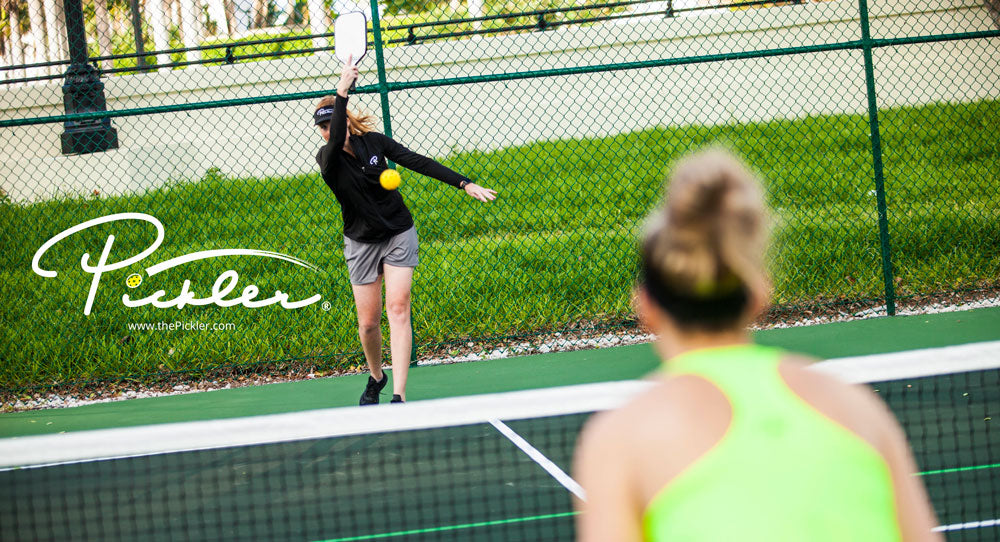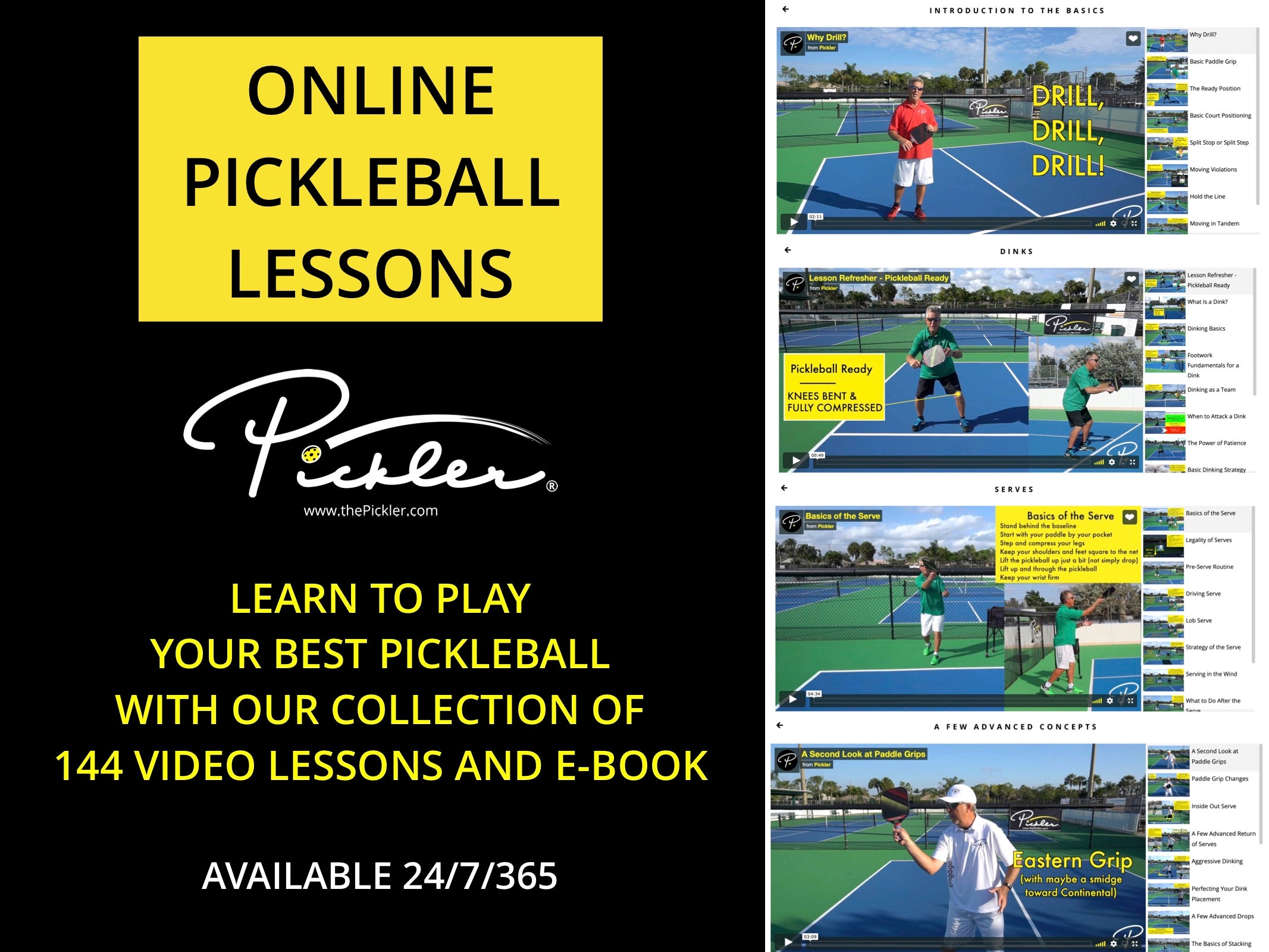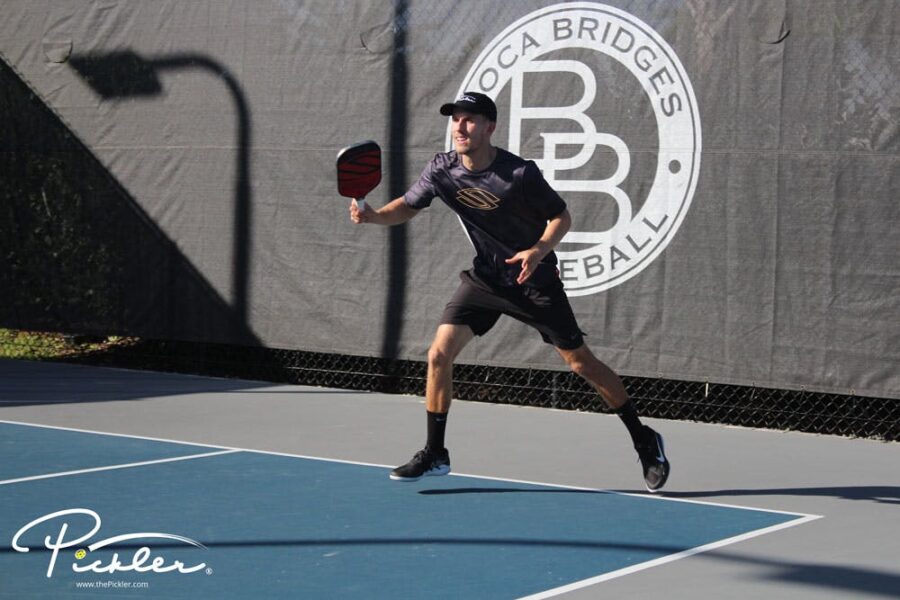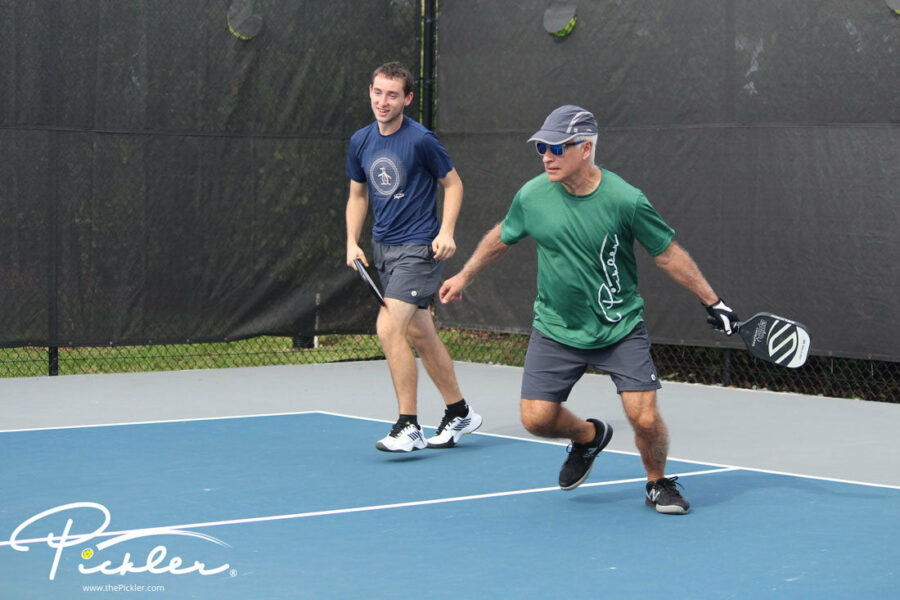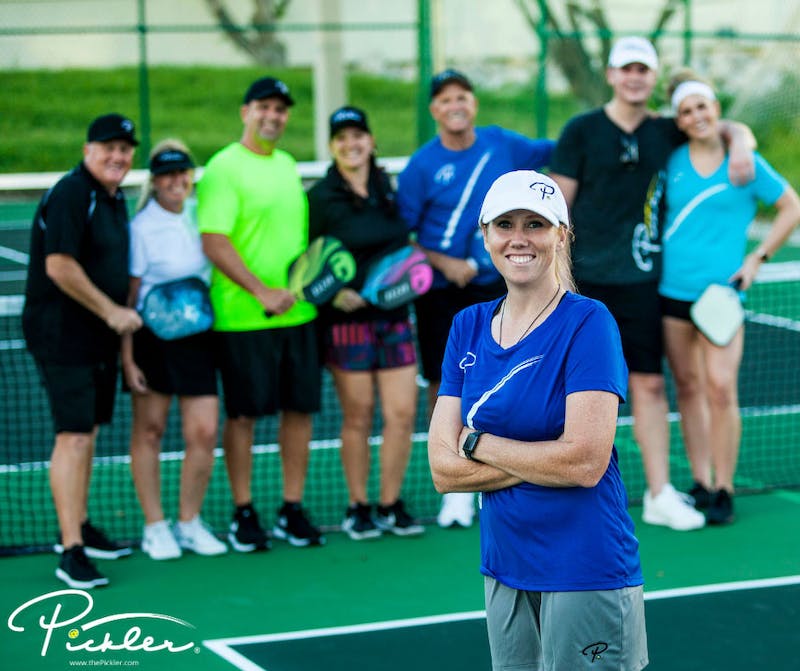Singles pickleball – the less common version of pickleball, but just as loved.
Singles pickleball is a very different game than doubles pickleball. In singles pickleball, you are alone on your side of the pickleball court—it is only you versus your opponent. You do not have a partner. This means that you have to rely on yourself—both physically and mentally—to cover the entire court, make every shot, and spot the right strategy on the pickleball court. And, the strategy in singles pickleball is what makes singles pickleball so different than doubles pickleball.
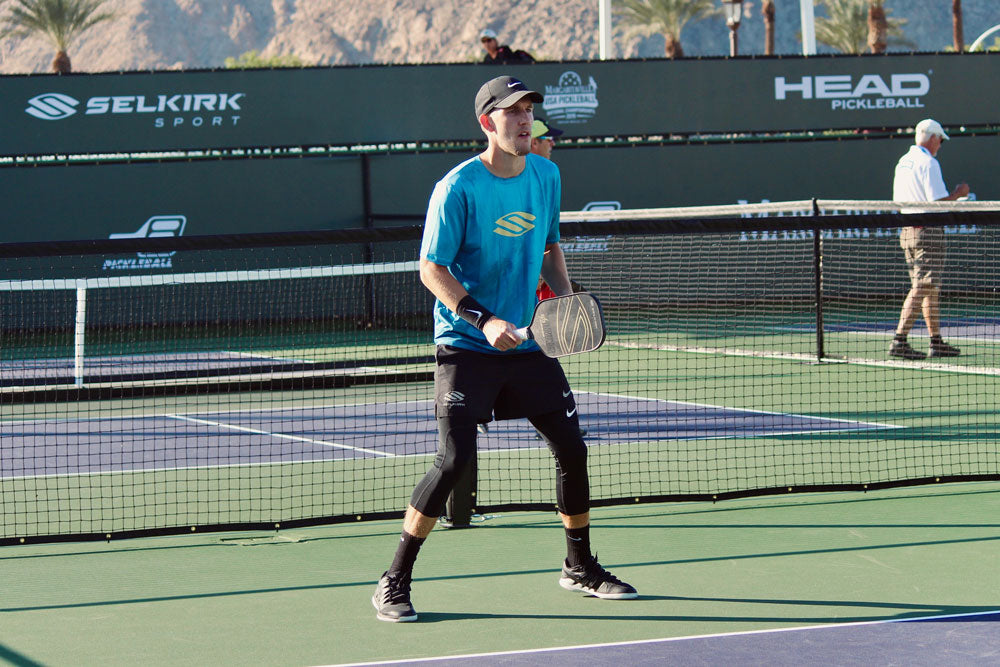 Photo Cred: Brittany Hubschman
Photo Cred: Brittany Hubschman
So, what is the strategy in singles pickleball? This pickleball blog breaks down various pickleball strategy tips for singles pickleball. Whether you are looking to try your first singles pickleball game, or an old pro, these pickleball tips will help you up your singles pickleball strategy.
1. Consistently Serve Deep in the Pickleball Court
Although a deep serve is an important strategy for doubles pickleball, a big, deep serve is even more important, and absolutely essential, in singles pickleball. You should hit a big, deep serve to push your opponent back beyond the baseline and make for a more difficult longer return for your opponents (and, hopefully, an easier third shot for yourself). A big, deep serve will give you an edge over your opponent from the very first shot.
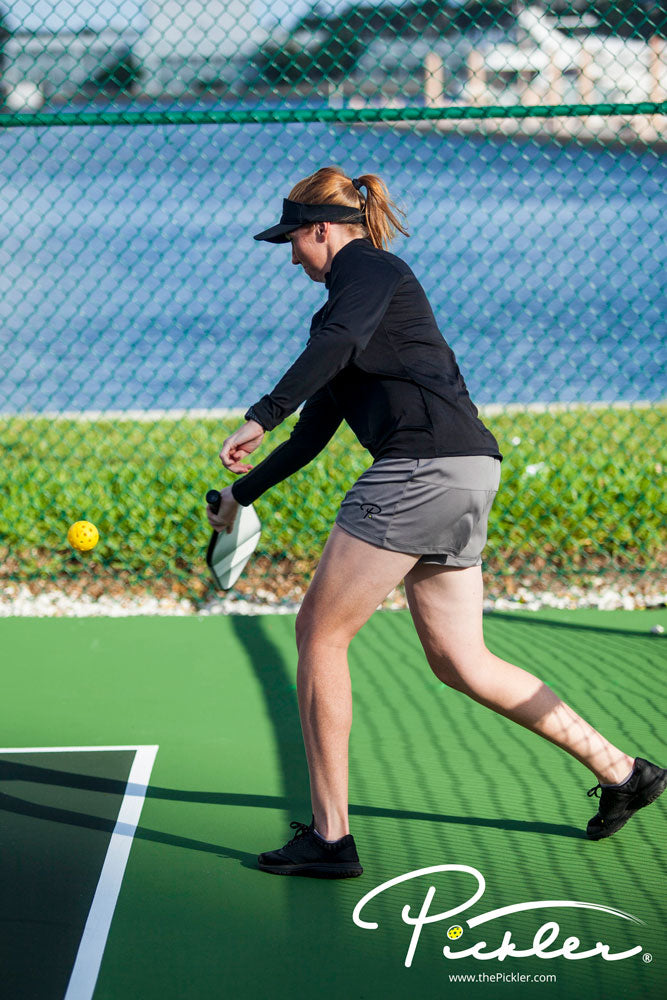
However, while a deep serve is the rule of thumb, be sure to avoid hitting your serve out of bounds due to giving yourself too small of a margin for error. Remember, the serve is one shot on the pickleball court that you can really perfect with practice and have complete control over (but for, maybe, wind). As a result, you should have extremely high accuracy on the serve.
2. Serve Near the “T” on the Pickleball Court
Another singles pickleball strategy tip on the serve is to consider hitting your serve towards the middle of your opponent’s side of the pickleball court, but still within the correct service box. In other words, serve near the “T” on the pickleball court (which is the intersection of the baseline and the centerline on the pickleball court). By serving near the “T” on the pickleball court, you will reduce the amount of steps you have to take and, more importantly, the amount of time that it takes you, to prepare for your next shot after the serve. This is because you will likely be near the middle of the court when preparing for your opponent’s return. You will also cut down on your opponent’s ability to hit a lot of angles with the return of serve.
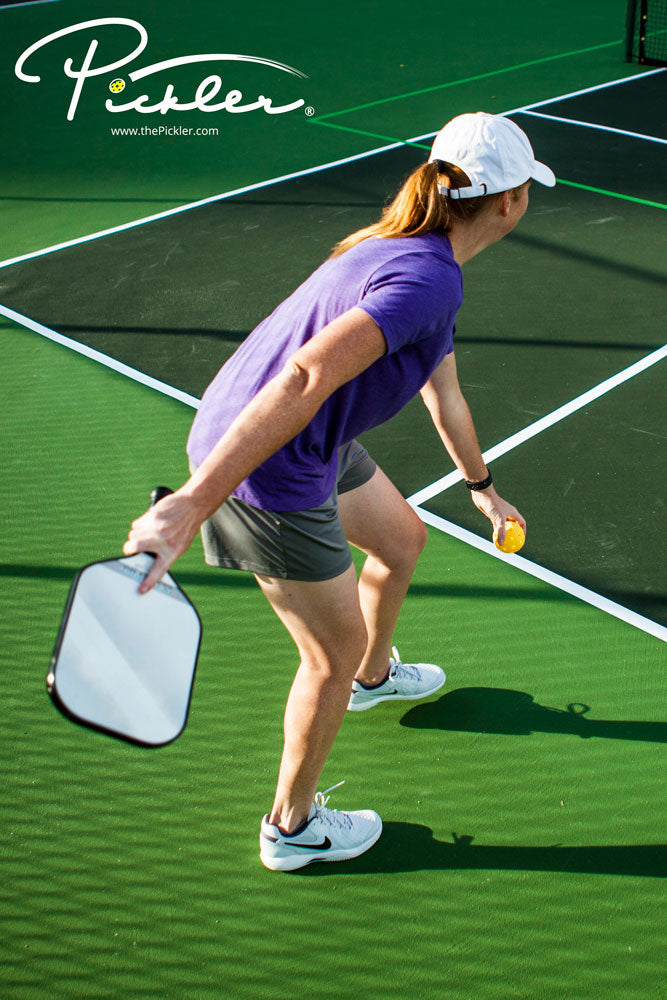
Although serving near the “T” on the pickleball court is a good rule of thumb, do not forget to mix up the placement on your serves. You do not want to be entirely predictable.
3. Consistently Hit a Deep Return of Serve
Similar to singles pickleball strategy tip #1 above regarding a big, deep serve, a big, deep return of serve is important in doubles pickleball. However, a big, deep return of serve is even more important in singles pickleball.
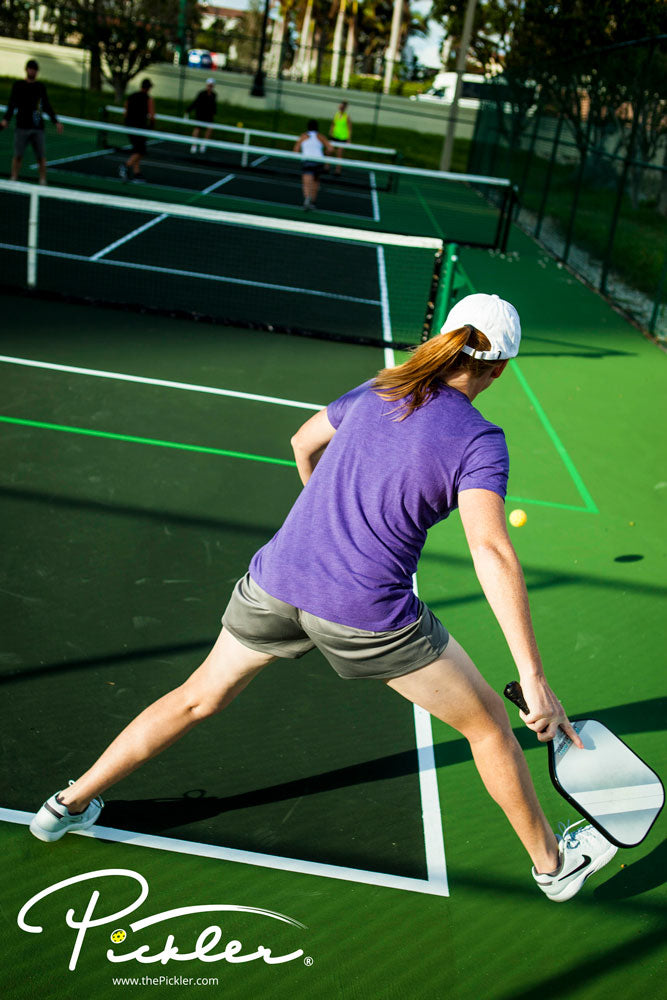
The return of serve should be deep in your opponent’s side of the pickleball court (in other words, close to the baseline, but within the court). By keeping the pickleball deep in the pickleball court, you will make for a more difficult third shot for your opponent and give yourself more time to react and get in to the pickleball net (more on this strategy below!). Also, the return of serve should target your opponent’s weaker side (which is often their backhand side).
Also, like the serve, while a deep return is the rule of thumb, be sure to avoid hitting your return out of bounds due to giving yourself too small of a margin for error. A missed return results in an easy point for your opponent!
4. Know What to Do When You Hit a Bad Return of Serve
Now, we know a big, deep return of serve is the preferred singles pickleball strategy. However, what if you hit a bad return of serve? What should you do?
If you hit a bad return of serve on the pickleball court, you generally have two options:
- Stay back at the baseline and play defensively to get yourself back in the rally; or
- Move in, but stop a few feet behind the Non-Volley Zone Line (also known as the Kitchen Line) in order to prepare for your opponent’s third shot. By moving in, you are playing more aggressive and your goal is to reduce the angles created by your poor return of serve.
The correct decision of these two options may depend on your strengths, your opponent’s strengths, and, maybe, just how bad your return of serve was.
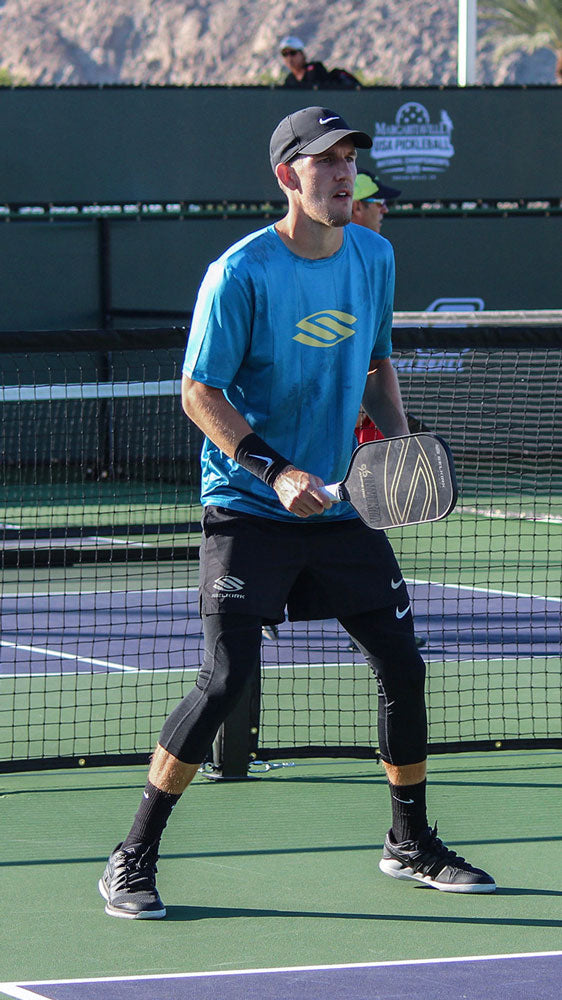
Photo Cred: Brittany Hubschman
5. Momentum > Space
Momentum is oftentimes more important than open court space. For instance, imagine that your opponent just tracked down your great shot and he or she is all the way in the back-right corner of the pickleball court. He or she hits a drive and immediately starts racing toward the middle of the pickleball court to re-position and anticipate your next shot. As you are about to strike your opponent’s drive, you realize that you can easily hit either the pickleball (a) in the open court space on the left side of the pickleball court, or (b) to where you opponent just was standing on the right side of the pickleball court. What should you do?
Although open space on the pickleball court is definitely a great spot to hit a shot, sometimes your opponent’s momentum is more important than how much court that he or she leaves open. It is very difficult to stop momentum and change directions. As a result, consider where your opponent’s momentum is taking them and hit shots in the opposite direction that your opponent’s momentum is taking them.
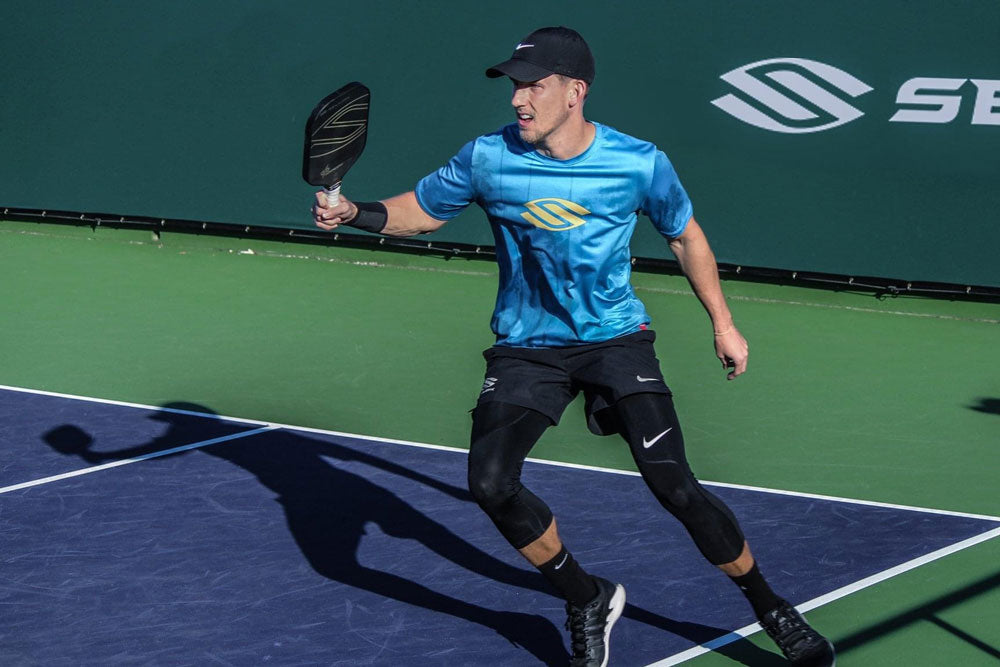
Photo Cred: Brittany Hubschman
If your opponent’s do not have any momentum generated, then look for and find the open court. Take advantage of any angles and passing shots to find the open court and defeat your opponent.
6. Track Your Shot on the Pickleball Court
After you hit your third shot if you are the server, or the return of serve if you are the receiver, track your shot on the pickleball court. This means that, instead of sprinting up to the middle of the pickleball court to the Non-Volley Zone or Kitchen Line, follow the flight path of your shot.
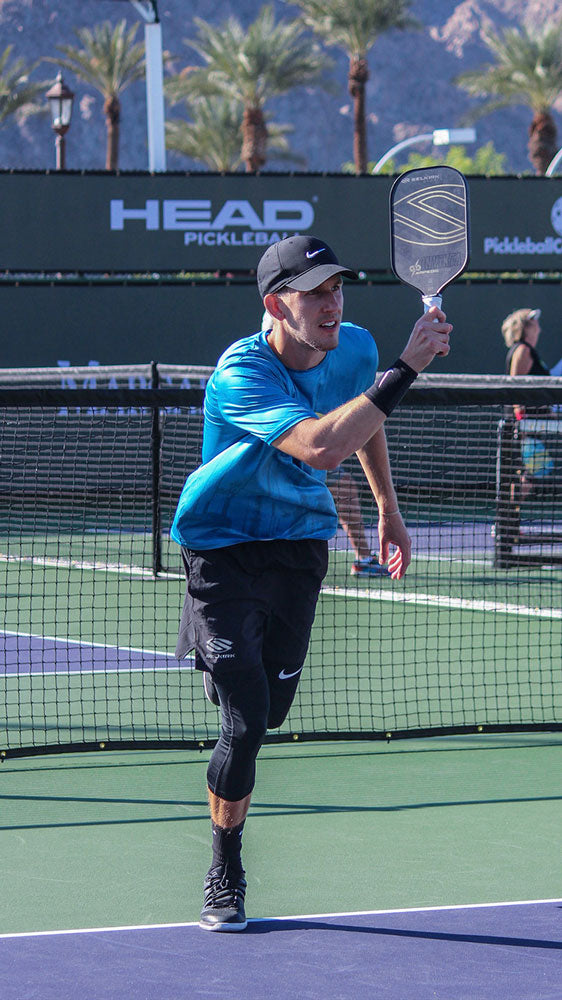
Photo Cred: Brittany Hubschman
By following the flight of the pickleball, you will be between your opponent and your side of the pickleball court that is closest to your opponent. In other words, you will be standing in the middle of the shortest distance between your opponent and your side of the pickleball court. This is important because this forces your opponent to hit the pickleball either (a) to the side of the pickleball court that you are already covering, or (b) crosscourt, which is a much more difficult shot for your opponent and which also gives you time to get to the crosscourt shot since it is a farther distance for the pickleball to travel.
So, follow the flight of the pickleball and track your shot to put pressure on your opponent!
7. Come In to the Kitchen Line!
One common theme between doubles pickleball and singles pickleball is that the overwhelming majority of points are won at the Non-Volley Zone Line (AKA Kitchen Line). As a result, it is important to move in and get to the Non-Volley Zone Line. This is especially true in singles pickleball because, by coming in to the Kitchen Line, you are able to cut off your opponent’s angles on the pickleball court.
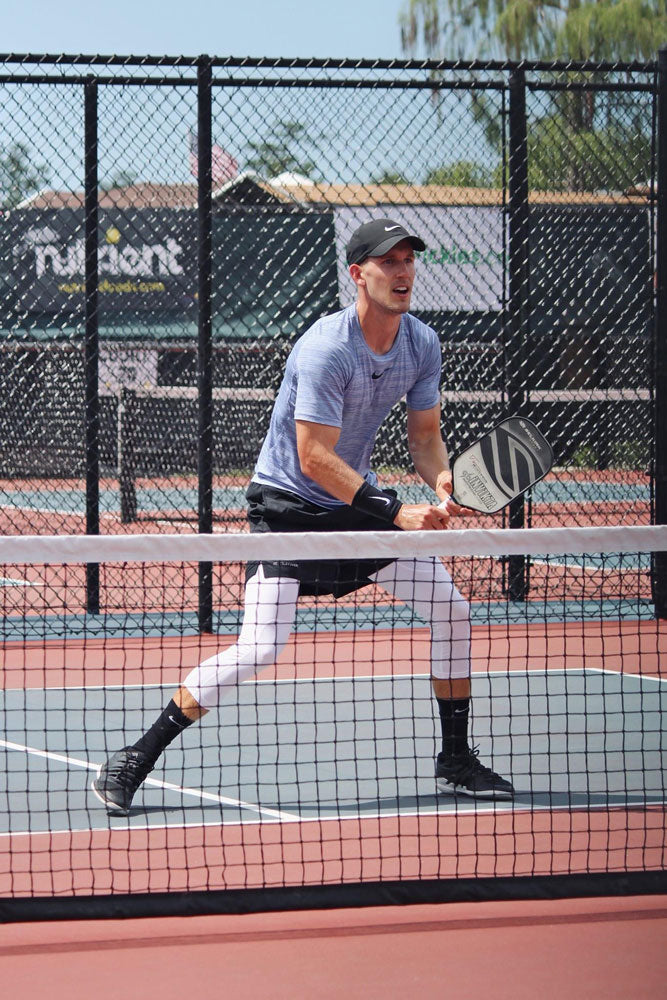
Photo Cred: Brittany Hubschman
So, putting this singles pickleball strategy tip together with a few of the tips above:
- Hit a big, deep return of serve—maybe even into a corner on your opponent’s weak side;
- Follow the flight of the pickleball on your return of serve; and
- Move in to the Non-Volley Zone or Kitchen Line to properly cut off your opponent’s angles on the third shot.
To note, with this pickleball strategy tip, you may get burned a time or two—meaning that your opponent may win a few rallies with a good passing shot. However, as noted above, the overwhelming majority of points are won at the Kitchen Line, so it is important to put yourself in a position to win by moving in to the Kitchen Line.
8. Let Your Opponent Make the Mistake
Sometimes pickleball players—especially singles pickleball players—go for “too much.” In other words, they try to hit winning shots. The issue with going for “winners” is that your margin of error is smaller and you typically will make more mistakes.
One strategy in singles pickleball is to put pressure on your opponent and allow your opponent to make the mistakes. Force your opponent to make a bad shot by going for a “winner,” rather than making those mistakes yourself. This is particularly true toward the end of a game and particularly on match point. As pickleball games move to completion—especially if one player has a discernable lead—the losing player has a tendency to “go big.” Put your opponent in that position and let your opponent be the one to make the mistakes on the pickleball court.
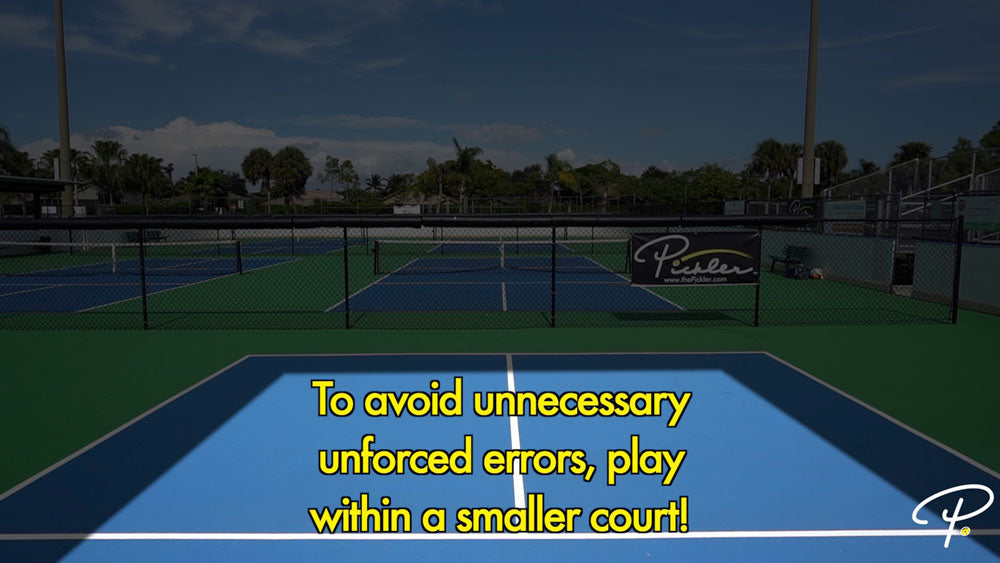
9. Up Your Cardio!
Singles pickleball is a one-yard sprint to each shot, as you are the only one on your side of the pickleball court and you have the entire pickleball court to cover. As a result, singles pickleball can really be taxing on your body and challenging for your endurance. In fact, sometimes, the player that wins in singles pickleball is simply the player that can last the longest on the pickleball court!
You do not want to lose a singles pickleball game just because you are too tired to carry on. To improve your stamina and endurance on the pickleball court, be sure to work on your cardio. You can work on your cardio by jogging, cross training, hiking, or any other physical exercise that raises your heartrate.
Shoutout to Pickleball Coach and Pro Brandon Hubschman!
This pickleball blog would not have been possible without pickleball coach and pro (and my great friend), Brandon Hubschman. You can find Brandon on the pickleball courts teaching at Boca Bridges Racquet Club in Boca Raton, Florida, behind a computer designing the best logos, graphics, and other content found across the globe (fun fact – including Selkirk’s graphics), and/or at most major pickleball tournaments across the country. Thank you for the great singles pickleball strategy tips, Brandon!*
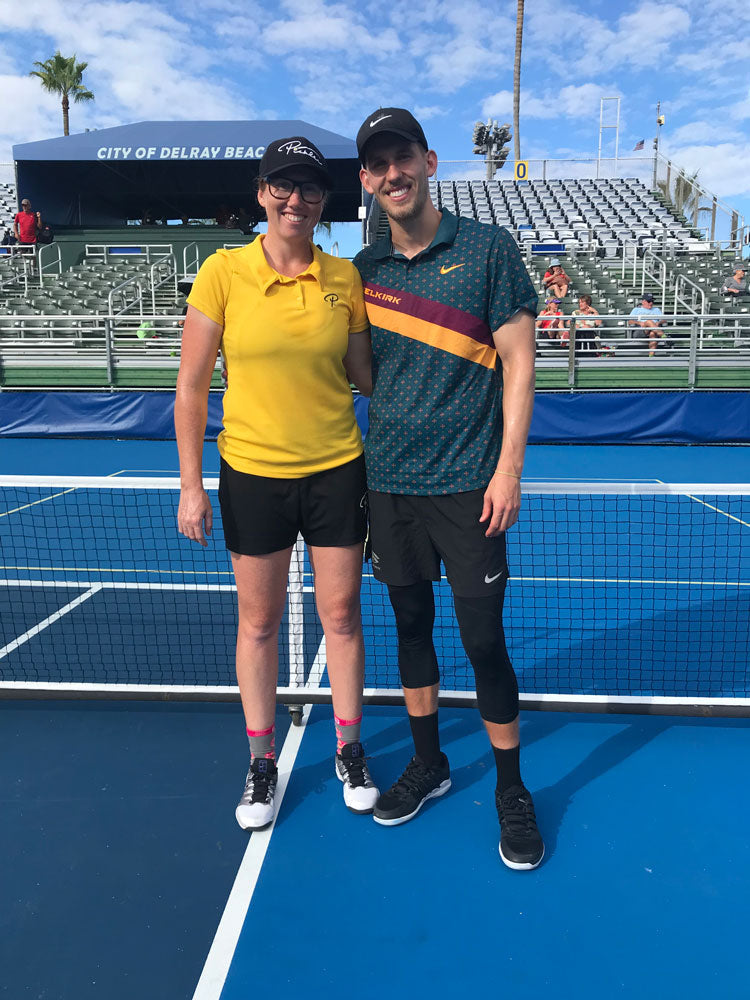
*THE FINE PRINT: If you find Brandon across the pickleball net from you during a game of singles pickleball, you agree not to use any of these great singles pickleball strategy tips against him!
Want More Pickleball Strategy Tips and Techniques?
If you want more pickleball tips and strategies on every aspect of your pickleball game, check out Pickler’s online video lesson collection called My Pro Pickleball Coach. My Pro Pickleball Coach is a fraction of the price of one clinic or even one lesson, and features over 140 video lessons (over 7 hours of instruction!), as well as a corresponding e-book. These online video lessons are available on demand 24/7 and breakdown every aspect of the sport of pickleball, including pickleball drills, strategy, and advanced concepts, so you will play your best pickleball.

